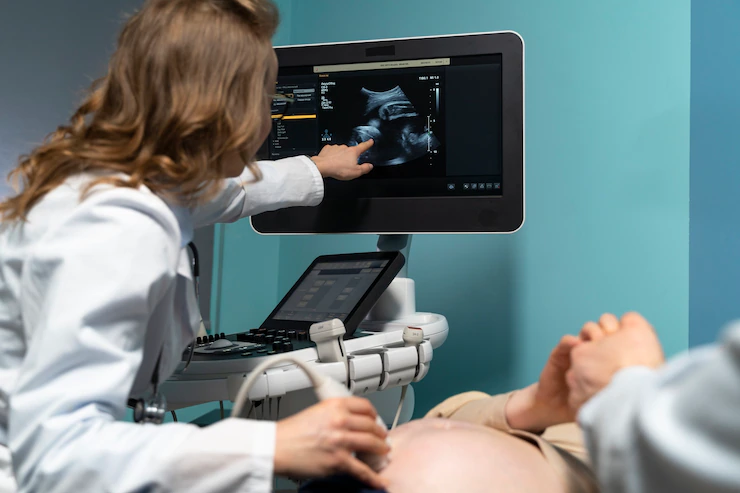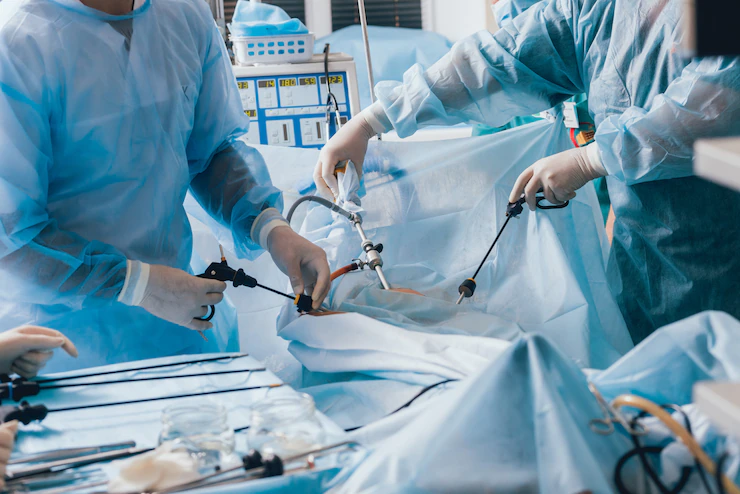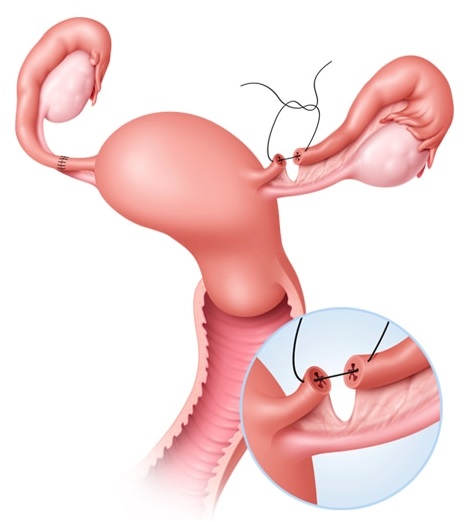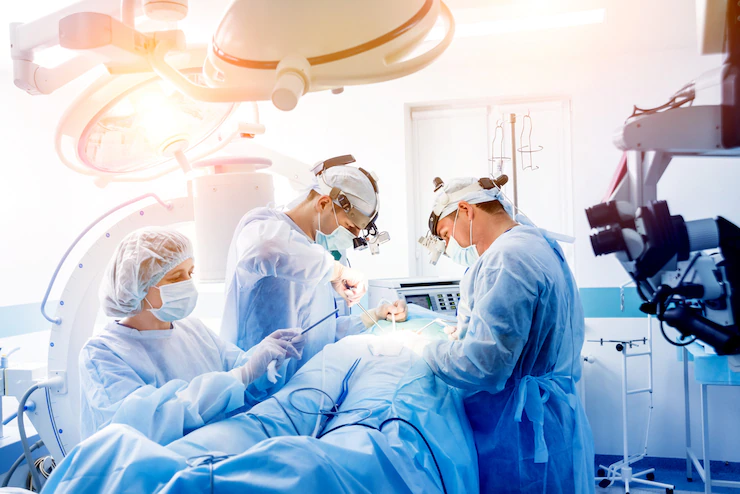OBSTETRICS & GYNECOLOGY
OBSTETRICS & GYNECOLOGY
A branch of medicine that specializes in the care of women during pregnancy and childbirth and in the diagnosis and treatment of diseases of the female reproductive organs. Obstetrics involves care during pregnancy, childbirth, and the postpartum period. Gynecology deals with reproductive health and the functions and diseases specific to women and girls.


OBSTETRICS & GYNECOLOGY
A branch of medicine that specializes in the care of women during pregnancy and childbirth and in the diagnosis and treatment of diseases of the female reproductive organs. Obstetrics involves care during pregnancy, childbirth, and the postpartum period. Gynecology deals with reproductive health and the functions and diseases specific to women and girls.
LAPAROSCOPIC GYNECOLOGICAL
Laparoscopic gynecological surgery is a minimally invasive approach that allows the surgeon to operate without making a large incision. A thin, lighted tube with a camera on the end, known as a laparoscope, is inserted into the abdomen through a small incision. Gynecologic laparoscopy is an alternative to open surgery. It uses a laparoscope to look inside your pelvic area. Open surgery often requires a large incision. A laparoscope is a slender, lighted telescope. It allows your doctor to see inside your body.


LAPAROSCOPIC GYNECOLOGICAL
Laparoscopic gynecological surgery is a minimally invasive approach that allows the surgeon to operate without making a large incision. A thin, lighted tube with a camera on the end, known as a laparoscope, is inserted into the abdomen through a small incision. Gynecologic laparoscopy is an alternative to open surgery. It uses a laparoscope to look inside your pelvic area. Open surgery often requires a large incision. A laparoscope is a slender, lighted telescope. It allows your doctor to see inside your body.
DIAGNOSTIC LAPAROSCOPY FOR INFERTILITY
Laparoscopy for infertility is a minimally invasive surgical procedure that uses a laparoscopic (a fiber-optic tube with light and video camera) inserted through two or more minor incisions, often in the belly button. The surgeon can then visually examine the pelvic reproductive organs and the pelvic cavity. Laparoscopy allows your doctor to not only see what’s inside your abdomen but also biopsy suspicious growths or cysts. Also, laparoscopic surgery can treat some causes of infertility, allowing you a better chance at getting pregnant either naturally or with fertility treatments.


DIAGNOSTIC LAPAROSCOPY FOR INFERTILITY
Laparoscopy for infertility is a minimally invasive surgical procedure that uses a laparoscopic (a fiber-optic tube with light and video camera) inserted through two or more minor incisions, often in the belly button. The surgeon can then visually examine the pelvic reproductive organs and the pelvic cavity. Laparoscopy allows your doctor to not only see what’s inside your abdomen but also biopsy suspicious growths or cysts. Also, laparoscopic surgery can treat some causes of infertility, allowing you a better chance at getting pregnant either naturally or with fertility treatments.
TUBAL RECAPITALIZATION
The procedure is done under sterile conditions to avoid the possibility of introducing infection. The overall time to do the procedure is about a half an hour, most of which is spent in getting you comfortable, readying the equipment, and cleaning the skin. The actual time spent in evaluating and unblocking the tubes is usually only a matter of minutes and you will be able to leave about a half hour after your procedure is completed.


TUBAL RECAPITALIZATION
The procedure is done under sterile conditions to avoid the possibility of introducing infection. The overall time to do the procedure is about a half an hour, most of which is spent in getting you comfortable, readying the equipment, and cleaning the skin. The actual time spent in evaluating and unblocking the tubes is usually only a matter of minutes and you will be able to leave about a half hour after your procedure is completed.
MTP
MTP is performed by experienced professionals and gynecologist because even if the procedure is minor, the risk involved is high. It is important to visit a gynecologist because there can be numerous complications regarding the abortion and before proceeding further one needs to check all the risk associated with medical termination of pregnancy. The gynecologist will first carry out the pregnancy test. This test confirms the period of pregnancy. USG in pregnancy, an ultrasound exam to check the age of the pregnancy and to confirm whether the pregnancy is not outside the uterus (ectopic pregnancy) and also not a tumor that developed in the uterus (molar pregnancy).


MTP
MTP is performed by experienced professionals and gynecologist because even if the procedure is minor, the risk involved is high. It is important to visit a gynecologist because there can be numerous complications regarding the abortion and before proceeding further one needs to check all the risk associated with medical termination of pregnancy. The gynecologist will first carry out the pregnancy test. This test confirms the period of pregnancy. USG in pregnancy, an ultrasound exam to check the age of the pregnancy and to confirm whether the pregnancy is not outside the uterus (ectopic pregnancy) and also not a tumor that developed in the uterus (molar pregnancy).
Hysteroscopy
A hysteroscopy is a procedure used to examine the inside of the womb (uterus). It’s carried out using a hysteroscope, which is a narrow telescope with a light and camera at the end. Images are sent to a monitor so your doctor or specialist nurse can see inside your womb. Hysteroscopy is considered minor surgery and usually does not require an overnight stay in the hospital. However, in certain circumstances, such as if your doctor is concerned about your reaction to anesthesia, an overnight stay may be required.


Hysteroscopy
A hysteroscopy is a procedure used to examine the inside of the womb (uterus). It’s carried out using a hysteroscope, which is a narrow telescope with a light and camera at the end. Images are sent to a monitor so your doctor or specialist nurse can see inside your womb. Hysteroscopy is considered minor surgery and usually does not require an overnight stay in the hospital. However, in certain circumstances, such as if your doctor is concerned about your reaction to anesthesia, an overnight stay may be required.
